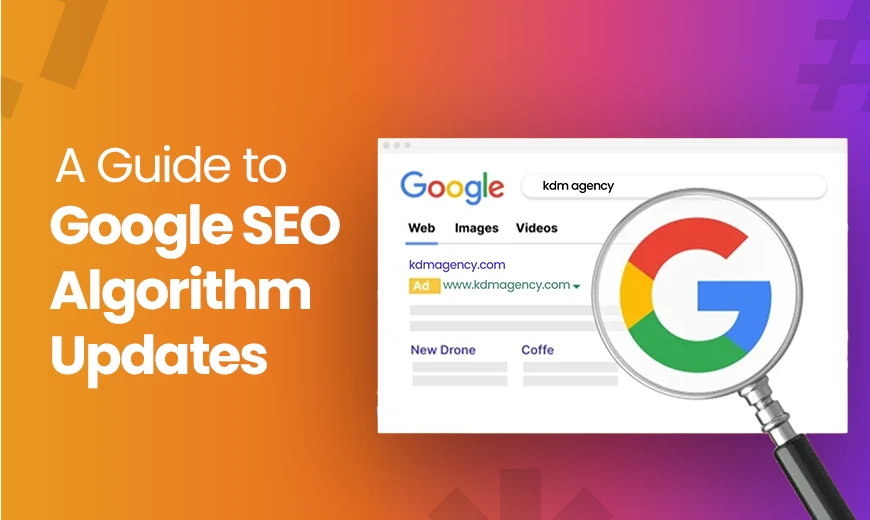In the world of digital marketing, staying aware with Google SEO algorithm updates is not optional. Businesses that fail to adapt risk losing visibility, traffic, and conversions. As Google refines its algorithm regularly to ensure better user experience, it becomes essential to understand what these updates mean, how they impact websites, and how to stay ahead. Google’s algorithm is a complex system used to retrieve data from its index and deliver the most relevant results for a query. Updates to this algorithm modify how results are ranked. Some are minor and go unnoticed, while others, like core updates, significantly shake up the search landscape. These changes are often aimed at improving content quality, fighting spam, and enhancing relevance for users. Google rolls out core updates several times a year. Unlike minor tweaks, these updates adjust how various ranking signals are weighted. According to Google Search Central, these changes do not target specific pages but can affect rankings across industries. Each core update focuses on improving the overall evaluation of content, emphasizing depth, relevance, authority, and usability. When sites experience a sudden drop in traffic or position, it is often tied to a core update rather than a manual penalty. Ranking drops are common after a core update, even for previously well-optimized sites. This volatility can result from shifts in how Google interprets search intent or reassesses content quality.Table of Contents
What Are Google SEO Algorithm Updates?
Understanding Core Updates and Their Impact
Why SEO Rankings Drop After Algorithm Updates
Understanding these triggers is crucial before making any reactive changes. Google never shares its full ranking recipe, but it often gives clues. Some of the recurring themes in updates include: These are not just checkboxes but part of the broader evaluation of search engine ranking factors. E-E-A-T stands for Experience, Expertise, Authoritativeness, and Trustworthiness. It has become a central pillar in how Google evaluates websites. How to Improve E-E-A-T:
Key Factors Behind Google Algorithm Changes
E-E-A-T
- Publish original, in-depth content authored by industry professionals
- Include credentials or bios for authors
- Maintain a secure website (HTTPS)
- Encourage third-party mentions and reviews
- Build niche authority over time, not overnight
Failing to reflect strong E-E-A-T is one of the most common reasons sites lose visibility during algorithm shifts. Launched to fight low-quality or AI-generated content, this update encourages creators to focus on people-first content rather than gaming the algorithm. There is no “set-it-and-forget-it” strategy in SEO, but you can build resilience into your approach. Focus Areas:Google’s Helpful Content Update
According to Google, content should be original, demonstrate first-hand expertise, and offer comprehensive answers. Thin content, keyword stuffing, and clickbait titles are now riskier than ever.How to Build an Algorithm-Proof SEO Strategy
- Regularly audit your content against Google Search Central recommendations
- Prioritise topic depth over word count
- Use schema markup and structured data for better crawlability
- Avoid link manipulation or grey-hat techniques
- Keep user experience at the center of your web design
Implementing an algorithm-proof SEO strategy gives you a cushion against future updates and supports long-term stability. Not every drop is due to an algorithm update. However, common symptoms of being impacted include: Compare your traffic drop with known update dates to assess correlation. SEO penalty recovery involves careful diagnosis and remediation. Here are the steps: Most importantly, don’t panic. Google has confirmed that recovery can take several months, and content should be improved holistically Adapting to Google algorithm changes 2025 means refining, not rewriting your strategy. Focus on: Use this period to strengthen your core content and prune what no longer serves your audience. Google SEO algorithm updates are a constant, not a one-off event. Success depends on how quickly and precisely you adapt. By understanding the mechanics behind each update, addressing weaknesses, and prioritizing user-centric strategies, your website can sustain rankings and grow over time. Need help navigating the next core update? Talk to our SEO experts today and protect your brand’s visibility with confidence. Partner with KDM Agency for future-proof SEO strategies that not only survive Google updates but thrive. Contact today!
A: They change how Google evaluates and ranks content, often leading to shifts in visibility, traffic, and SERP features.
A: Audit your content, improve underperforming pages, and align with the latest Google guidance
A: Improve content quality, enhance E-E-A-T signals, and monitor performance over time. There’s no quick fix
A: It involves studying Google's documentation, industry research, and observing search behaviour to align your content with its evolving expectations
A: Minor updates happen daily. Major core updates occur multiple times a year.
A: The latest updates have focused on content authenticity, user intent alignment, and penalising low-quality or manipulative pages.
A: They can re-rank entire domains based on quality reassessment, impacting visibility and traffic site-wide
A: Focus on high-quality, original content, improve user experience, update old pages, and ensure technical SEO hygiene.
A: Maintain a strong content foundation, avoid black-hat tactics, and track performance regularly to adapt fast.
A: This update prioritises content written by and for people, aiming to reduce low-value or automated articles in SERPs.
A: Core updates evaluate overall content quality and relevance. Spam updates specifically target deceptive or manipulative SEO tactics.Signs You’ve Been Hit by a Penalty
Recovery from SEO Penalties and Drops
Best Practices After a Google Algorithm Change
Conclusion
FAQs
How do Google updates affect SEO?
Q: What should I do after a Google algorithm update?
Q: How to recover from a Google core update?
Q: What is the process of understanding the Google search algorithm?
Q: How often does Google update its algorithm?
Q: What are the effects of the latest Google SEO update?
Q: How do Google core updates impact website ranking?
Q:What are SEO best practices after a Google algorithm change?
Q: How to stay safe during Google algorithm updates?
Q: What is Google's helpful content update?
Q: What is the difference between Google core update and spam update?

